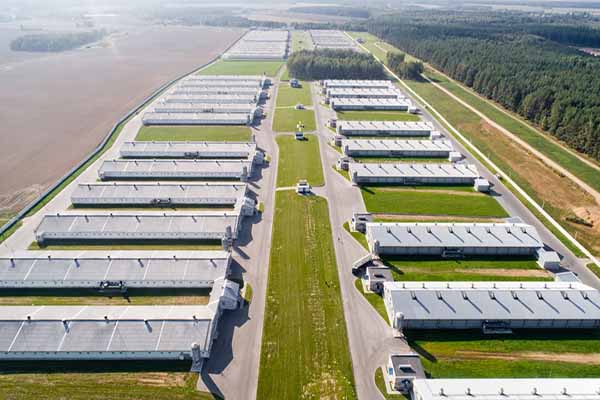Analysis of Labor Cost Savings of Automated Equipment for Uganda Chicken Farms
Time : 2025-06-28
The poultry industry, particularly in developing countries like Uganda, plays a significant role in food security and rural employment. However, the industry faces numerous challenges, including labor-intensive processes and high labor costs. One solution to mitigate these challenges is the adoption of automated equipment. This article analyzes the potential labor cost savings associated with the implementation of automated equipment in Uganda’s chicken farms, providing insights into the economic and operational benefits.
Introduction to Uganda’s Poultry Industry
Uganda’s poultry industry has experienced rapid growth in recent years, driven by the increasing demand for poultry products both domestically and internationally. The industry contributes to food security, income generation, and job creation. However, the manual nature of many poultry farming processes, such as feeding, cleaning, and monitoring, poses challenges to efficiency and cost-effectiveness.
Automated Equipment in Poultry Farms
Automated equipment refers to machinery and systems that perform poultry farming tasks with minimal human intervention. Some common types of automated equipment in poultry farms include automated feeders, cleaners, incubators, and waterers. These technologies are designed to enhance productivity, reduce labor costs, and improve biosecurity.
The Potential of Automated Equipment in Reducing Labor Costs
One of the primary reasons for implementing automated equipment in Uganda’s chicken farms is the potential for labor cost savings. This section analyzes the various ways in which automation can contribute to cost reduction:
Increased Productivity
Automated equipment can significantly increase the productivity of poultry farming operations. For instance, automated feeders can distribute feed to birds at precise intervals, ensuring that they receive the optimal amount of nutrition. Similarly, automated cleaners can efficiently remove manure and litter, improving the overall hygiene of the farm.
Increased productivity leads to lower labor costs, as fewer workers are required to perform the same tasks. In Uganda, where labor is relatively inexpensive, the cost savings from increased productivity can be substantial.
Reduced Labor Intensity
Many poultry farming tasks, such as feeding and cleaning, are labor-intensive. By automating these tasks, farms can reduce their reliance on manual labor, leading to cost savings. Moreover, automating labor-intensive processes can improve worker safety, as it minimizes exposure to hazardous environments.
Improved Biosecurity
Biosecurity is a critical aspect of poultry farming, as diseases can spread rapidly and lead to significant financial losses. Automated equipment can contribute to biosecurity by reducing the risk of human transmission of diseases. For instance, automated waterers can be designed to minimize the risk of cross-contamination between birds and humans.
Long-term Maintenance and Upgrades
Automated equipment often requires less maintenance than manual systems, resulting in lower long-term costs. Moreover, many modern automated systems can be easily upgraded to incorporate new features and technologies, further enhancing their efficiency and cost-effectiveness.
Case Studies: Successful Implementation of Automated Equipment in Uganda
To illustrate the potential labor cost savings of automated equipment, this section presents two case studies of Uganda’s chicken farms that have successfully implemented automated systems.
Case Study 1: Farm A
Farm A, a medium-sized poultry farm, installed an automated feeding system and cleaning equipment. As a result, the farm’s labor requirements decreased by 30%, and the feed conversion ratio improved by 10%. The cost savings from reduced labor and improved productivity were estimated to be approximately 20% of the farm’s total expenses.
Case Study 2: Farm B
Farm B, a larger poultry operation, implemented an automated incubator and hatchery system. The system reduced the need for manual labor in the incubation and hatching process by 40%. Consequently, the farm experienced a 25% reduction in labor costs, while also improving chick quality and survival rates.
Conclusion
The implementation of automated equipment in Uganda’s chicken farms can significantly reduce labor costs and enhance overall operational efficiency. Increased productivity, reduced labor intensity, improved biosecurity, and long-term maintenance and upgrades are some of the key benefits associated with automation. By investing in automated technologies, poultry farmers can enhance their competitiveness in the market and contribute to the country’s food security.
Tags












